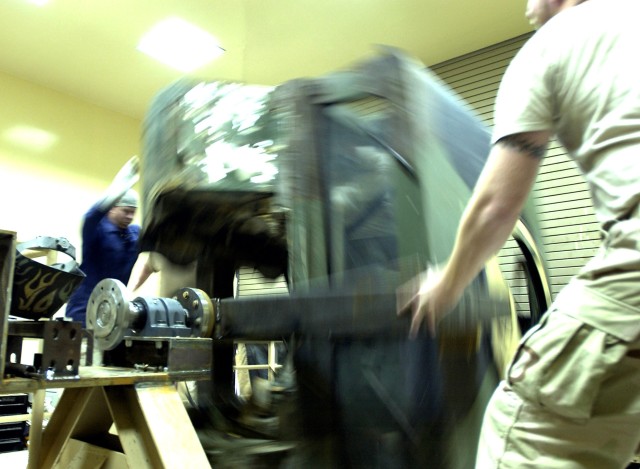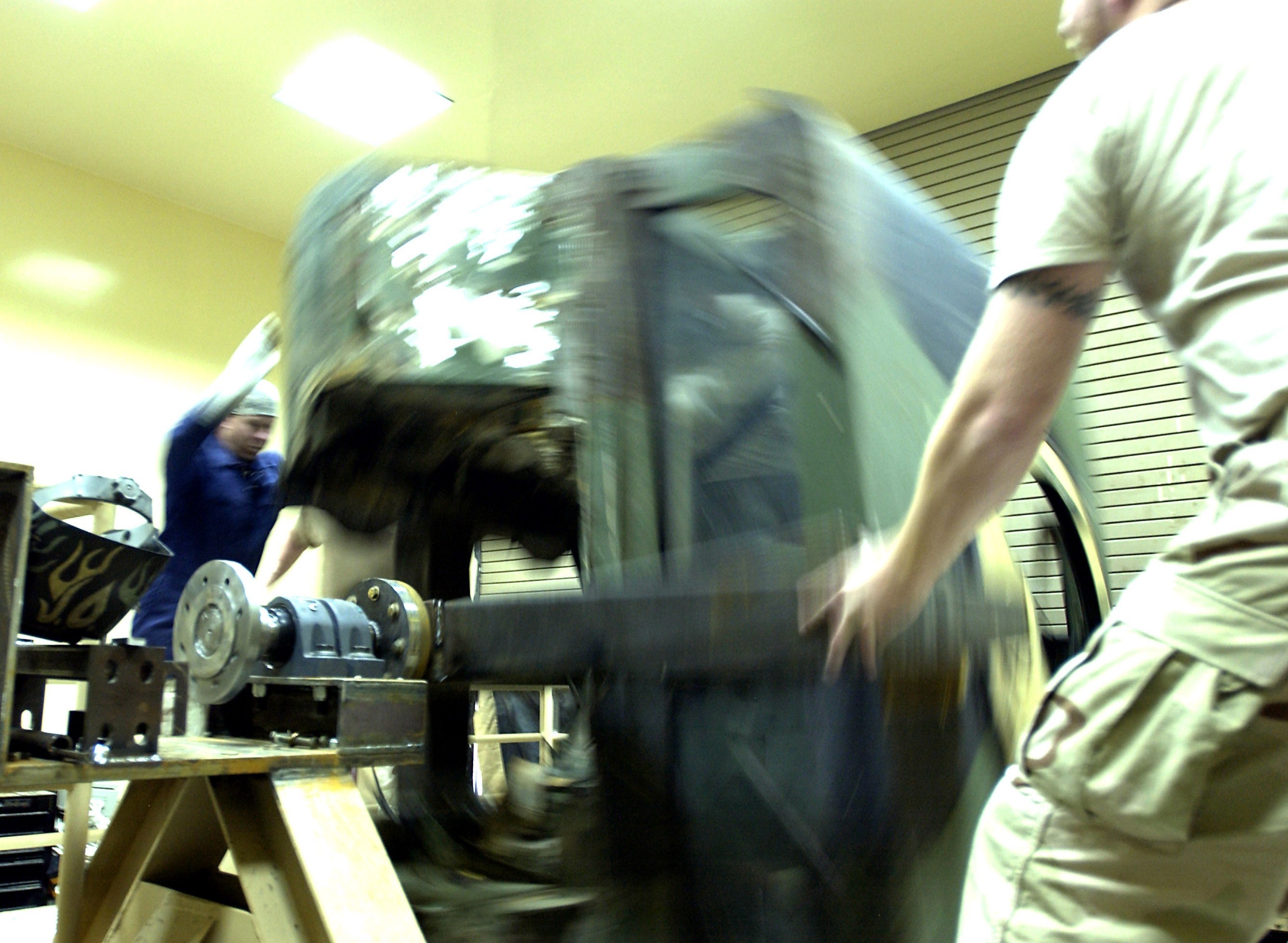CAMP ARIFJAN, Kuwait, Oct. 25, 2006 - Hoping to reduce casualties suffered in Humvee rollover accidents, Army officials are fielding a new simulator they hope will prevent deaths and injuries in such accidents.
More than 8,000 soldiers have been trained so far in the Humvee Egress Awareness Training simulator, or HEAT, and Army Material Command and U.S. Army Central are building more than 30 of the simulators to be fielded across the theater in the months ahead.
The Forward Repair Activity here, a team of more than 50 civilians from Anniston Army Depot in Anniston, Ala., and Red River Army Depot in Texarkana, Texas, are building the simulators, said Ed Morris, FRA chief.
Morris said Lt. Col. John Hermann, AMC support operations officer, coordinated the efforts to have the HEAT trainers built. Camp Arifjan was chosen to undertake this project because the FRA is the only unit in the theater that has all the skill sets necessary to complete it, he said.
"We have depot-level machinists, welders and mechanics all at one location, and those are the skills necessary to build this. There's no worrying about having to deal with outside sources," he said. Chief Warrant Officer Rikki Cox also with the FRA, came up with the idea for the simulator, said Chris Turner, a welder from Anniston depot.
Building the HEAT is a team effort, Turner said. It takes four days to make one, and it's built from ground up with spare parts and damaged Humvees. The front and rear ends are cut off, and the Humvee cab is then fused to a base frame and hooked to an electric motor.
Two other team members, Micah Garrett and Corey Jenkins, also from Anniston Depot, devote long hours daily to the completion of the HEAT simulators. Both are responsible for the overall assembly of the base frame, sometimes working 16-hour shifts welding and drilling the base frame.
"It's a new experience being away from my family, but I'm glad to be here. I feel good about what I do. I feel that I'm helping the soldier in some way," said the 22-year-old Garrett, an Alpine, Ala., native.
Jenkins, a Mumford, Ala., native and former soldier of 10 years, knows what the HEAT is worth to the modern soldier. "This simulator is good training for the soldiers," he said.
Although the HEAT carries a price tag of about $33,000, Brandon McDaniel, a heavy mobile equipment repairer from Anniston Depot, said he thinks its benefit far outweighs its price.
"It's a good program. It's saving lives, and if it saves one life, then it's worth the money. Anything that we do, whether it's putting on body armor or this simulator, is worth it if it saves soldiers on the battlefield," he said.
The 30 HEATs are scheduled for completion this month, and once they are built, they will be sent to camps in Kuwait, Afghanistan, Iraq and Qatar. The HEAT's lightweight design allows for air transport, if necessary, Morris said.
He also said the FRA is proud of the work it does preparing the simulators and getting them out to soldiers.
"The team here is really dedicated to this program, because of all the potential to save lives. There has been a lot of soldiers killed in rollover accidents, and they put long hours and hard work into building this. It's a team effort, and we know the importance of what we're doing," Morris said.
"Since I've been here, I've had soldiers come up and thank me and my team for what we do here, and that's a blessing," Garrett added.
(Army Sgt. Carlos M. Burger II is a Desert Voice staff writer at Camp Arifjan, Kuwait.)


Social Sharing